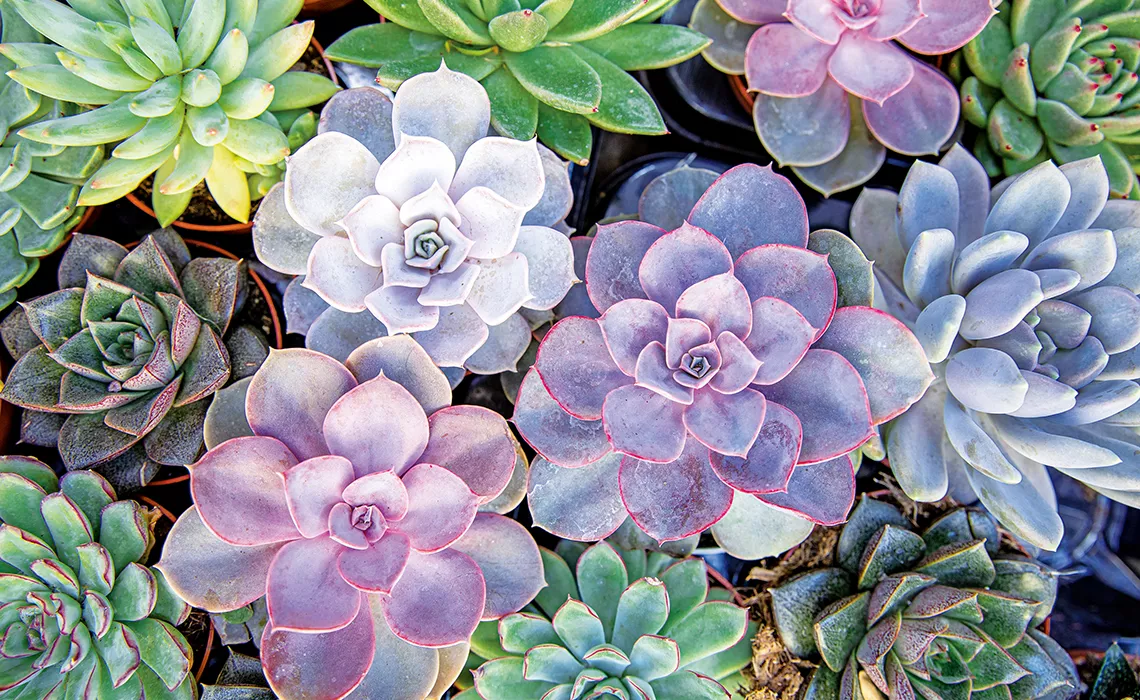Succulents have gained immense popularity in recent years as beloved additions to gardens, homes, and even office spaces. These fascinating plants have captured the hearts of many due to their striking appearances and unique abilities to survive in arid environments. However, beyond their aesthetic charm, succulents boast a range of impressive functions and adaptations that enable them to thrive in harsh conditions. In this article, we will delve into the remarkable world of succulents, exploring their diverse roles and closely related topics, shedding light on why these plants are adored by enthusiasts worldwide.
Succulents: An Overview
Succulents are a group of plants characterized by their ability to store water in specialized tissues, such as their leaves, stems, or roots. This water storage capability allows them to survive in arid and semi-arid regions where water is scarce.
The succulent group includes a wide variety of plants, ranging from small, compact rosettes to large, spiky cacti. They come in various shapes, colors, and sizes, making them versatile choices for gardeners and collectors.
1. Water Storage and Drought Tolerance
Water-Storing Adaptations
One of the most remarkable features of succulents is their ability to store water in their tissues. Their fleshy leaves, stems, or roots serve as reservoirs that allow them to endure extended periods without rain or irrigation.
Drought Tolerance Mechanisms
To minimize water loss, succulents have developed several drought tolerance mechanisms. These include thick cuticles, reduced leaf surface area, and the ability to close their stomata (tiny pores on their surfaces) during hot and dry periods.
2. Adaptations for Water Absorption
Shallow and Wide Root Systems
Succulents often possess shallow but extensive root systems that allow them to absorb water rapidly when it rains. These roots spread out in search of moisture, maximizing their ability to capture rainfall.
Root Hyphal Associations
Some succulents form symbiotic relationships with mycorrhizal fungi. These associations enhance the plant’s capacity to absorb water and nutrients from the soil, contributing to their resilience in harsh environments.
3. CAM Photosynthesis
Crassulacean Acid Metabolism (CAM)
One of the most intriguing aspects of succulents is their photosynthetic pathway known as CAM. Unlike most plants that conduct photosynthesis during the day, succulents with CAM perform it at night, keeping their stomata closed during the day to reduce water loss.
Nighttime CO2 Uptake
By taking in carbon dioxide (CO2) at night and storing it as malic acid, succulents efficiently use this stored CO2 during the daytime to carry out photosynthesis. This adaptation helps them conserve water and survive in arid regions with limited access to CO2 during the day.
4. Reproduction and Propagation
Asexual Reproduction
Succulents have various methods of asexual reproduction, enabling them to produce clones of themselves without relying on seeds. Common forms of asexual reproduction include offsets, pups, and stem or leaf cuttings.
Sexual Reproduction
In addition to asexual reproduction, succulents also produce flowers and undergo sexual reproduction. Their vibrant and attractive flowers serve as pollinator magnets, facilitating seed production and genetic diversity.
5. Ecosystem Roles
Habitat and Niche
Succulents play vital roles in their native ecosystems, occupying specific niches as drought-resistant plants. They provide shelter and food for a range of creatures, including insects, birds, and small mammals.
Soil Conservation
The extensive root systems of some succulents help prevent soil erosion in arid regions by stabilizing the ground and holding it in place during heavy rains.
6. Medicinal and Therapeutic Uses
Traditional Medicinal Practices
Various cultures have utilized succulents for their medicinal properties for centuries. Some succulent species are known for their anti-inflammatory, antimicrobial, and wound-healing properties.
Aloe Vera
Aloe vera, a well-known succulent, is widely used in cosmetic and skincare products for its soothing and moisturizing effects on the skin.
7. Aesthetic and Decorative Purposes
Ornamental Value
Succulents’ striking shapes, colors, and textures have made them sought-after choices for ornamental plantings. They are used in gardens, landscapes, and indoor spaces to add visual interest and aesthetic appeal.
Container Gardening
Succulents’ adaptability to various growing conditions makes them excellent candidates for container gardening, allowing people with limited space to enjoy their beauty.
8. Cultural and Symbolic Significance
Symbolism
Succulents hold symbolic meanings in different cultures. They are associated with resilience, endurance, and renewal due to their ability to survive in challenging environments.
Feng Shui and Energy Balance
In Feng Shui, the strategic placement of succulents is believed to bring positive energy and balance to living spaces.
Conclusion
Succulents are remarkable plants that have captivated the hearts and minds of plant enthusiasts worldwide. Their unique adaptations and functions enable them to thrive in some of the harshest environments on Earth. From water storage and drought tolerance to their diverse reproductive strategies, succulents have proven their resilience and versatility time and again. Additionally, they offer valuable medicinal properties, serve essential roles in ecosystems, and bring aesthetic beauty to gardens and homes. Whether you are a seasoned gardener or a newcomer to the world of plants, succulents are a fascinating group worth exploring and cultivating, showcasing nature’s ingenuity and the wonders of botanical diversity.


